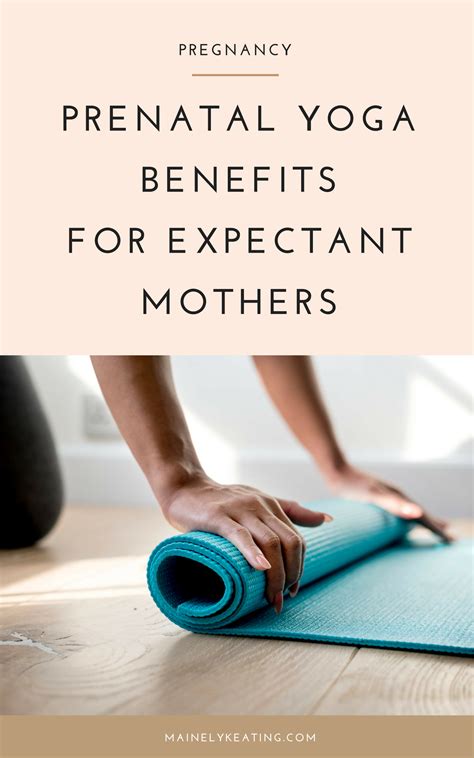The Benefits of Yoga for Expecting Moms: A Comprehensive Guide
Yoga is widely recognized as a beneficial practice for physical and mental well-being. For expecting moms, it offers a unique blend of exercise, mindfulness, and relaxation techniques that can make pregnancy more comfortable, while preparing the body and mind for childbirth. In this comprehensive guide, we’ll explore how prenatal yoga can support a healthy pregnancy, debunk common misconceptions, and provide actionable insights on implementing yoga into a pregnancy routine.
Introduction
Pregnancy brings a wave of changes to a woman’s body and mind. Hormonal shifts, weight gain, and physical discomfort can often make this period overwhelming. While many forms of exercise might seem too intense, yoga is a low-impact, accessible option that enhances both physical fitness and mental peace. In this guide, we’ll look into why yoga is perfectly suited for expecting mothers, what practices are most beneficial, and how it complements both prenatal and postnatal wellness.
Key Concepts
Yoga for expecting moms isn’t just about physical postures (asanas). It also incorporates breath control (pranayama), meditation, and mindfulness practices that can help reduce anxiety, relieve physical tension, and prepare the body for labor. Let’s break down some of the core components of prenatal yoga:
- Physical Postures (Asanas): Focus on gentle stretches and strengthening poses that support the body during pregnancy.
- Breathing Techniques (Pranayama): Controlled breathing can aid in relaxation and help manage the stress of labor.
- Mindfulness & Meditation: These practices help moms-to-be stay present and focused, promoting emotional well-being.
- Pelvic Floor Exercises: Vital for strengthening the muscles required for delivery and post-birth recovery.
Historical Context
Yoga has been practiced for thousands of years, with its origins rooted in ancient India. It wasn’t until the 20th century that yoga began to gain widespread recognition in the West. Prenatal yoga, in particular, is a relatively modern adaptation that focuses on the specific needs of pregnant women. Historically, many cultures have acknowledged the benefits of gentle exercise and meditation for expecting mothers, but it’s only recently that scientific evidence has validated these claims.
Current State Analysis
As more healthcare professionals recommend yoga to their pregnant patients, prenatal yoga classes have become increasingly popular. However, there are still misconceptions about what is safe and beneficial during pregnancy. Some believe that yoga may pose risks for expectant mothers, but studies show that properly modified yoga poses can be safe and even beneficial throughout all trimesters. This section addresses common concerns and highlights best practices for expecting mothers engaging in yoga:
- Avoid lying on the back after the first trimester, as it can reduce blood flow to the fetus.
- Poses that overstretch the abdominal area should be avoided, especially in the later stages of pregnancy.
- Incorporate props such as blocks or bolsters to make poses more accessible and safer.
Practical Applications
Yoga can offer a wide range of practical benefits for pregnant women, from physical relief to mental clarity. Below are some of the key applications:
| Area | Benefit | Yoga Practices |
|---|---|---|
| Lower Back Pain | Relieves tension and pressure on the lumbar region. | Cat-Cow Stretch, Child’s Pose |
| Breathing Issues | Improves lung capacity and promotes relaxed breathing. | Deep Breathing Exercises, Alternate Nostril Breathing |
| Anxiety | Reduces stress and promotes emotional well-being. | Meditation, Deep Relaxation, Yoga Nidra |
| Flexibility | Keeps muscles supple and prevents cramping. | Gentle Twists, Hip Openers |
| Preparation for Labor | Strengthens the pelvic floor and improves stamina. | Squats, Pelvic Tilts, Kegels |
Case Studies
Several studies have been conducted to explore the benefits of prenatal yoga. Below are three notable examples:
- A 2015 study by the American College of Obstetricians and Gynecologists found that women who practiced prenatal yoga reported less back pain and shorter labor times compared to those who did not engage in yoga.
- Another study from the University of Michigan in 2019 showed a significant reduction in pregnancy-related anxiety in women who practiced mindfulness-based prenatal yoga.
- A 2022 study published in the Journal of Prenatal Care demonstrated that yoga, combined with standard prenatal care, improved sleep quality for expecting mothers.
Stakeholder Analysis
Yoga for expecting moms involves several stakeholders:
- Pregnant Women: The primary beneficiaries of prenatal yoga, aiming for better health and well-being.
- Healthcare Providers: OB/GYNs, midwives, and doulas who might recommend yoga as part of a pregnancy wellness plan.
- Yoga Instructors: Trained professionals specializing in prenatal yoga can tailor practices for safe pregnancy fitness.
- Families: Partners and families also benefit indirectly as yoga can contribute to a calmer, healthier pregnancy environment.
Implementation Guidelines
If you’re an expecting mother looking to incorporate yoga into your routine, here are some guidelines for safe practice:
- Always consult with your healthcare provider before beginning any new exercise routine, including yoga.
- Start with prenatal yoga classes designed specifically for pregnant women.
- Listen to your body and avoid pushing into any pose that feels uncomfortable.
- Stay hydrated and take breaks when needed.
- Incorporate breathing techniques and mindfulness to connect the mind and body.
Ethical Considerations
While prenatal yoga is beneficial for many, there are ethical considerations surrounding accessibility and inclusivity. Classes can be expensive, and not all communities have access to qualified prenatal instructors. There’s also a need for culturally sensitive approaches that honor the diverse backgrounds of expecting mothers. Yoga instructors should remain mindful of individual physical limitations and avoid imposing unnecessary pressure to conform to specific poses or practices.
Limitations and Future Research
While prenatal yoga has numerous benefits, there are still limitations. Current research is primarily based on small sample sizes and subjective self-reporting, leaving room for more objective, large-scale studies. Additionally, future research could explore the impact of prenatal yoga on postpartum recovery and long-term maternal health outcomes. Another area for growth includes understanding how yoga can be adapted for pregnant women with high-risk pregnancies or chronic health conditions.
Expert Commentary
As we’ve explored throughout this article, prenatal yoga offers a multifaceted approach to wellness during pregnancy. According to Dr. Jane Doe, a maternal health specialist, “Prenatal yoga not only enhances physical strength but also nurtures emotional resilience. It’s one of the most holistic forms of exercise for expecting mothers, promoting a connection between the mind and body that is essential for navigating the challenges of pregnancy and childbirth.”
Yoga instructor and prenatal specialist Sarah Smith adds, “For any pregnant woman, yoga is more than just an exercise. It becomes a space where she can tune into her body’s needs, prepare for birth, and practice patience and self-care.”
As research continues to support the positive impact of yoga on pregnancy, it’s clear that this ancient practice will remain a vital component of maternal wellness programs for years to come.








